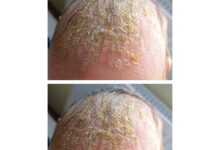The nurse discusses the most alarming things individuals do just before they die…
We all face the same fate: death. Nonetheless, it remains one of our deepest anxieties, cloaked in mystery and ambiguity.
Now, a hospice nurse is using social media to shine light on some of the most upsetting things individuals do before they die, assisting families in understanding the dying process and alleviating their fears.
She has personally witnessed numerous deaths.
Julie McFadden, a nurse who specializes in end-of-life care, has made it her goal to educate people on what to anticipate as a loved one approaches death.
The Los Angeles native has spent over 15 years working in critical care and hospice, and via her web videos and book, she provides personal accounts of the final moments of life. Her goal is to reduce the taboo around dying and make people feel better prepared.
“I was an ICU nurse for nearly 8 years and saw many deaths. As healthcare personnel, we would discuss the chances of our patients dying among ourselves, but not with them or their families.” This inspired me to speak up and advocate for my patients and their families, as well as to hold family meetings,” she adds.
In one of her most popular blogs, McFadden discusses the two most typical yet “disturbing” phenomena that occur as someone nears the end: alterations in breathing and the iconic “death rattle.”

1. Breathing changes.
One of the most disturbing things families witness at a loved one’s deathbed is a rapid change in breathing rhythm. McFadden says this could be worrying, especially if people don’t know it’s normal.
“You’ll notice rapid breathing, followed by long pauses, and then rapid breathing again,” she informs me.
This is known as Cheyne-Stokes breathing, and it occurs as the body’s metabolic processes shut down. The pattern repeats itself, with each cycle lasting around 30 seconds to 2 minutes.
While it may appear disturbing, McFadden tells families that it does not indicate that their loved one is suffering.
Ms. McFadden uploaded a video of a female patient going through the procedure, characterizing it as a series of rapid, erratic breaths followed by a long pause. Experts believe that this happens because a dying patient’s brain struggles to recognize carbon dioxide levels in the blood, altering the normal rhythm of breathing.
“This individual, as you can see, is completely unconscious. This is neither causing them to suffer nor making them feel suffocated. We know this because the body indicates that it is calm. “It’s not acting like it can’t breathe,” Julie explained.
2. The “death rattle”
Another typical but frightening symptom is the death rattle, a gurgling noise that can startle people unfamiliar with it.
McFadden adds that when the body approaches the end of its life, the brain ceases transmitting signals to swallow saliva, causing a buildup in the mouth. This causes a rattling sound as air passes through the throat.
“People often think it’s coming from their lungs, but it’s really just saliva collecting in the mouth,” she explains.
Though the sound might be unnerving, McFadden adds that it is perfectly natural and does not cause pain or anguish to the dying individual.
The body understands how to die.

Despite how unsettling these indications may appear, McFadden tells families that the body has a normal pathway for death.
“The body knows how to die,” she says, adding that if the patient shows any signs of discomfort, drugs can help keep them at ease.
Her message is clear: death is not to be feared. Understanding the process allows families to be more prepared and at peace while saying their final goodbyes.
According to research, the body begins to decompose soon after death. Changes in a dying person’s metabolism can cause a peculiar stench in their breath, skin, and bodily fluids, which commonly resembles the smell of nail polish remover.
During this process, putrescine, a poisonous chemical with a strong odor, is released into the atmosphere. At a subconscious level, individuals may notice this terrible odor linked with decomposition. When the brain detects this odor, it initiates an instinctual response associated with the acknowledgment of death.

